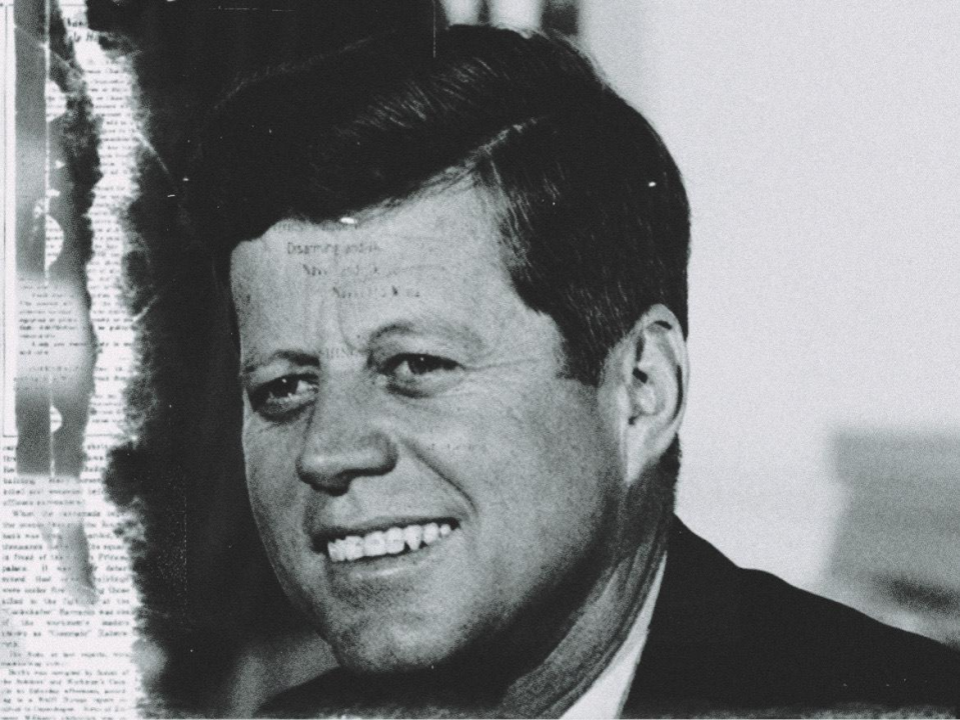In the 62 years since a bullet took the life of President John F. Kennedy on a blustery day in Dallas, Texas, the event has become something of a modern myth. In the wake of the assassination, the official narrative details police officers arresting the lone gunman, Lee Harvey Oswald, inside a book depository overlooking the president’s motorcade. Two days later, Oswald was shot during a prison transfer by Jack Ruby, a nightclub owner. Both shooters had unclear motives.
Immediately, doubt sprung up over what many viewed as a suspiciously neat answer to one of American history’s most shocking events. Conspiracies percolated: ranging from dramatic claims of extraterrestrial involvement to the most popular theory, the idea that the CIA had turned on its own president and orchestrated the event. These theories became so embedded in American culture that 65% of Americans questioned the official narrative of the assassination as of 2023. Even Kennedy’s own nephew, Robert F. Kennedy Jr., secretary of Health and Human Services, revealed in 2023 that he believed the CIA was involved in the assassination. This was the backdrop against which President Trump made the surprise announcement that what he claimed was the remainder of the JFK files—some 80,000 pages—would be released on March 18.
Upon the files’ release, historians began combing through the documents. Quickly, the story of the Kennedy assassination took yet another turn. The files that had been legendary for decades, historians found, revealed little about Kennedy’s assassination. What the documents did detail, however, was a vast web of CIA covert actions, including involvement in foreign affairs ranging from election interference to previously unknown correspondence with the Vatican.
In one seven-page memo from 1973, a CIA operative lists dealings between CIA Director John McCone and Popes John XXIII and Paul VI as just some of the times the CIA could be viewed as having “exceeded” its jurisdiction. Paul Murphy, Ph.D, the director of the Institute of Catholic Studies at John Carroll University, theorized that these dealings involved a common interest. Murphy said, “The Catholic Church as a whole during the Cold War was staunchly anti-communist. So it is not surprising that a high ranking CIA official … would engage the Vatican on issues of common interest.” At the time, the potential influence a pope could have on Kennedy, America’s first Catholic President, was a breeding ground for controversies.
Other documents detail the CIA’s wiretapping in Mexico City in 1962. Newly unredacted sections of documents also state that at one point, half of the political officers in American embassies were CIA. These details amount to one of the most sudden releases of unredacted information in American history: disclosing what amounts to a shadow network of CIA officials operating with little accountability. Ultimately, however, the files do not accuse the CIA of involvement in Kennedy’s assassination.
Still, the files do provide some breadcrumbs for the conspiracy-theory-inclined. One memo, most of which had been declassified by President Biden in 2021, details claims made by CIA Agent Gary Underhill that Kennedy had been killed by “a small clique within the CIA.” The memo displays the CIA’s interest in Underhill’s claims, including a listing of the CIA’s profile on Underhill. The newly unredacted portion of the memo goes into further detail on Samuel Cummings, an agent who Underhill accused of being within the clique that killed Kennedy. The memo reveals that the business Samuel Cummings ran later in his life, Interarmco, was a CIA front. Underhill died six months after he made the claim in what was ruled a suicide.
Another document, a memo to President Kennedy from 1961, expressed concerns about growing CIA involvement in the Department of State, displaying tension between the CIA and The Executive Branch. These new details are far from confirmation, but they do little to silence conspiracy theorists. In the aftermath of the release, political influencers have been eagerly pointing to the Underhill Memo as evidence of the CIA’s involvement.
John Carroll students were split on the new information. Jackson Bishop ’28 said, “I still believe it was the CIA. I haven’t quite had time yet to sift through all the files but my convictions remain the same.” Sean Simms ’27 said, “I think Oswald killed him, but I don’t think it was a lone assassin.”
Upon the document’s release, Director of National Intelligence Tulsi Gabbard revealed that some documents were still under lock and key due to court orders. Gabbard has said the National Archives is working to “expedite” the release of these final files. For now, the new release of documents follows the formula of previous reports on the Kennedy Assassination: new details, no confirmations and even more questions.


